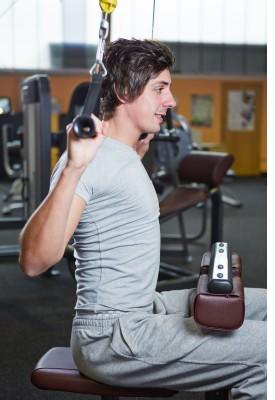 Before heading to a gym, be sure you’re packing more than just a towel! You’ll need an understanding of proper exercise technique to optimize benefit and avoid injury.
Before heading to a gym, be sure you’re packing more than just a towel! You’ll need an understanding of proper exercise technique to optimize benefit and avoid injury.
Here are some tips to get you started:
Warming-up and Stretching:
No matter your fitness level, warming-up and stretching are required prior to any workout.
Your warm-up should consist of about 10 minutes on any piece of cardio equipment. The key is to push just hard enough to elevate your body temperature and increase blood flow to the muscles. Another option is to park a few blocks from the gym, which can be a welcome change of scenery on sunny days!
Once you have warmed up, you should follow a set flexibility program. Stretching second is important because soft tissue flexibility increases with skin temperature elevation, while pre-planning helps prevent you from neglecting any major muscle groups. As a type of ongoing warm-up, always begin each new exercise with one set performed at only moderate weight.
Poor exercise form almost always stems from attempts to lift too much weight. This common mistake leads to limited range of motion and engagement of the wrong muscle groups, thus reducing physical benefit and increasing the risk of injury.
If your goal is to improve strength, do not overload or sacrifice form; instead, lift at your maximum comfortable limit, but also lower repetitions to approximately six and allow more time for rest between sets.
What Good Form Looks Like:
You will know good form when you see it because it is slow, smooth, and includes the full intended range with no jerking to begin or finish the movement.
For instance, many novices incorrectly start standing barbell curls by using their body weight to swing the bar to their chest and then finish by letting the weight drop quickly back to their legs. On the contrary, good form entails controlled, steady motion throughout the curl with no movement in the body. Another common flaw is the utilization of unintended target muscles. A common example is that, when performing cable pull-downs, many use primarily their arms, shoulders, and, again, even their body weight to pull the cable, despite the fact that this is really a back-muscle exercise. This generally leads to underdeveloped back muscles and over-trained or injured arms and shoulders.
Proper exercise technique also means discussing preexisting injuries with your physician, as exercises for these areas should likely be performed only within your pain-free ranges of motion.
If your exercise technique could benefit from additional tips or from a fully personalized wellness routine, consider contacting a personal trainer today!
Shaun Karp is a certified personal trainer and the owner of Karp Personal Training and Rehabilitation in Vancouver, B.C. For further information call his office at 420-7800 or visit www.karpfitness.com.

